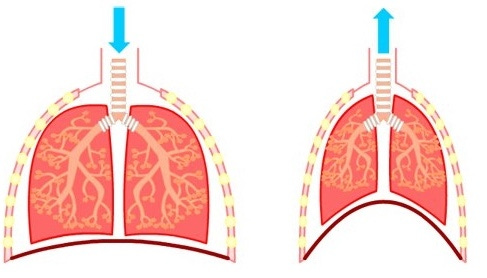Grand Finale! The Ultimate Stress Relief Cheat Sheet (Part 3 of 3)
If you can stop your nervous system from trying protect you, you can lessen your pain and quell your anxiety.
Hello reader! I’m Meredith Arthur. I work as a Chief of Staff for Pinterest’s product incubation studio and am the founder of Beautiful Voyager. For the past nine years, I’ve been writing about how overthinkers, people pleasers, and perfectionists navigate anxiety. Healing from chronic anxiety, a state of nervous system dysregulation, starts with learning to manage stress successfully. That’s what this cheat sheet is all about.
Parts 1 and 2 focused on preventative care to get your nervous system in shape.1 In Part 3, we’ll look at how to get your nervous system back on track when stress actually hits.2
Exercises for difficult moments
Everyday practices are great, but what should you do in the moment when you’re facing something hard? Ground, Orient, Resource.
Ground: Become aware of your feet on the ground or the seat underneath you.
Orient: Find five sensory elements in your immediate environment to focus on including color, form, and texture.
Resource: Take a small action to tell your nervous system you are safe.
1. In-the-moment mantra
Are you calm, wise, and patient in the face of spiky stress?3 Me neither. When a new stressor pops up, I grab the nearest mallet to wack-a-mole the issue away. There’s trouble in this approach, though. Urgency makes the nervous system leap to action. Over time, instead leaping into e.g. a freeze response and then back to a regulated baseline, your nervous system might find itself stuck mostly in the freeze state. Your baseline might even change as you spend more and more time in freeze. It’s the stuff of Batman villains.
This is why it’s important to give your system a chance to recover before tackling a new stressful problem. A mantra can help. The right phrase or mantra gives you space to recover and your nervous system the chance to rebalance.4 Say the mantra to yourself, then, if you can, set aside the stressor until you’re in a better mindset (or emotional space).5
What makes a good mantra
It has to be a phrase you truly believe — your nervous system will know if you’re faking it
It should be powerful enough to interrupt unproductive or negative thinking
It should be connected to a topic causing you stress
Examples of mantras I currently use to escape Mr Freeze
“I know that future me has [insert issue] covered, so I am going to let this go until it’s time to take action.”
“I am allowed to have a short vacation from [insert issue].”6
“If I keep thinking this way, I will only get sicker. Instead, I am going to imagine a future in which I’ve solved [insert issue] in detail. I’ll allow that feeling of peace to wash over me.”
2. Belly breathing
If you are a stomach gripper, this is a crucial exercise for your nervous system. Most belly breathing exercises tell you to push your belly out when you inhale. That description never worked for me — I didn’t understand it mechanically — so I tended to just ignore any talk of belly breathing. And then I started doing clinical somatics, and I learned from experience that belly breathing is hugely important for stress relief.
To make belly breathing my own, I had to learn to visualize the diaphragm. In case you’re like me, here’s the visualization I use to unlock the breath:
Your diaphragm looks like an inverted bowl that pushes flat and turns into a plate as it contracts. Take a look at the image on the above left. See how the diaphragm pushes itself flat? When you consciously engage your diaphragm and push it flat, a vacuum is created. Air is sucked into your lower lungs, which take up more space in your abdomen and push your belly out. When your inhale is done, your diaphragm relaxed back into its inverted bowl shape (image above right). Your lungs get smaller, your belly returns to its normal state, and you exhale.
Again, belly breathing is not about pushing your belly out.7 It’s about allowing your diaphragm to contract on the inhale (bowl becomes plate) then relax on the exhale (plate bends back into bowl).
How to belly breathe when faced with stressful situation
Start by releasing all tension in your upper belly. Pop your belly out on purpose to loosen up. Do this in any position, wherever you are.
Next, imagine your diaphragm turning into a flat plate as it pushes down on your belly and you inhale. Inhale for a count of 5 or 7.
Pause for a moment at the top of the inhale.Your belly should be pushed out due to the inhale. It should feel big and free.
Now allow your diaphragm to return to its natural inverted bowl shape as you exhale. Your expanded belly will return to its normal state. Hold on to the relaxed feeling in your belly throughout the practice.
I do 3-4 rounds of this breath when needed. As you get the hang of it, you can do it in any position — sitting, standing, or lying down.
3. The Basic Exercise
In addition to being a great foundational practice to build your window of tolerance (I included it in Part 1), this polyvagal exercise is fast and easy. It can help regulate your nervous system in the moment when you’re feeling stress.
Critics will tell you that we don’t yet understand the mechanism that make polyvagal exercises work, warning you to sidestep the hype. While I support a healthy dose of skepticism in all wellness endeavors, it doesn’t hurt you to give this exercise a try as it is easy and totally free. When I first started doing it, the Basic Exercise almost made me feel nauseated to move my eyes from side to side. Now I clear my head of nausea by doing the exercise. Weird, right?
Sit tall wherever you are.
Interlace your hands and clasp the back of your head between your ears, sending your amygdala a message of safety.
With your EYES ONLY, look to the right and hold.
Breathe, relax, and allow your body to soften.
Hold 30-60 seconds until you yawn or feel an internal shift. It can take practice to recognize the shift, but the yawn is a dead giveaway that this is working.
Repeat on the left side.
4. Neck massage using oil
This one is simple — I take a few drops of this scented vagus nerve scented oil and rub the sides of my neck and tips of my ears with it.8 With this one, you’re looking to release the tension in the sides of your neck. I follow the path recommended for my specific migraine pattern as illustrated in Stanley Rosenberg’s book. I explore the tendons that connect my jaw to my neck to my scapula, knowing that this kind of massage stimulates the vagus nerve.9
Whew, that’s a lot!
Great work making it through the final part of the stress relief cheat sheet. I hope some of the ideas I shared here help you — or least get you thinking about how your nervous system may be affecting your daily life.
Please keep exploring how to send messages of safety to your nervous system. Toss aside any exercises that don’t work for you and go on to the next. Your master switch10 is unique, but to find it you’ll need to experiment. Share your wayfaring tips in the comments below!
Recommended Reading
The Pain Relief Secret: How to Retrain Your Nervous System, Heal Your Body, and Overcome Chronic Pain by Sarah Warren
Accessing the Healing Power of the Vagus Nerve: Self-Help Exercises for Anxiety, Depression, Trauma, and Autism by Stanley Rosenberg
The Mindbody Prescription by Dr John Sarno
Recommended Listening
The Cure for Chronic Pain Podcast with Nicole Sachs
SOMA: Releasing Muscle Tension and Reliving Chronic Pain with Clinical Somatics Podcast with Sarah Warren
Using Polyvagal Theory to Balance the Nervous System on The Adult Chair Podcast with Michelle Chalfant
Daily practices are good for expanding your window of tolerance, or your body’s ability to move from a hyper-aroused (fight or flight) or hypo-aroused (withdrawn, frozen) back to a more grounded self and place. People with bigger windows of tolerance are better equipped to tolerate the challenges of daily life.
That sudden email from your kid’s school about a lice outbreak. The political fight you accidentally got into with a friend. The massive credit card bill you’re trying to ignore. Negative feedback from your manager. The joke you made that no one laughed at. You get the picture.
If yes, congratulations! Now get out of here.You do not need this cheat sheet.
The nervous system exists to protect us. It is doing its job by going into an aroused state. The goal is to resources that help you handle these inevitable daily stressors gracefully and intentionally, without your system being hijacked.
I find this usually takes one day, or at least one night of sleep. As long as I have one night of sleep between me and a new problem, I can usually handle it without triggering tension in my system. When I come back to the issue in a new headspace, I often find I can handle it without making my nervous system go haywire.
A variation on this theme for people who understand how the nervous system works: “I just flipped into a sympathetic response to [insert issue], so I’ve got to take a vacation from this for now. I’ll be better equipped to solve this tomorrow when I’m more regulated.” My somatic teacher also calls the hijacked response “popping your top.” When you pop your top, you need to wait for your executive functioning to come back online before you proceed.
I created an Instagram highlight on this topic — take a look if you want more visuals.
You don’t need a fancy oil to do this. What you’re looking for is a scent to transport you (e.g. the way freshly ground coffee does) and a texture that enhances the neck massage. Sounds weird to say, but you want to feel the tendons under your fingers as you rub. I like the oil for this reason.
Even the skeptics from the article I linked to above acknowledge the power of the neck massage: “I spoke to Dr. Christopher Labos, a cardiologist and associate of our Office, about what he calls a very ‘Jedi’ technique. Sometimes, when the heart is beating irregularly, a doctor can massage the side of the neck, which will send a message to the brain that then passes through the vagus nerve, slows the heart down, and can break this irregular rhythm.”
Think of your nervous system as a set of fancy LED lights. Your job is to find — then use — the master switch that controls the lights. You’re not just turning lights on and off, though. Nervous system regulation is about learning to control the color and the flashing patterns of the lights. You want the right lights at the right time—no one needs fluorescent disco lights at 9 AM on a Monday morning.







